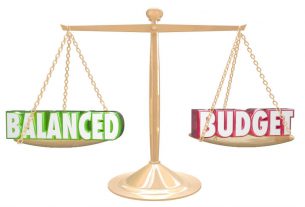Much of the recent news has focused on the government shutdown, the first since 2013. Not surprisingly, there has been a lot of hand-wringing about how awful it would be when the government shuts down. Those who understand exactly what the federal government does, however, realize that it’s not the end of the world.
From some of the press coverage, you would think that the federal government shutting down would be disastrous. Air and water will suddenly overflow with pollutants, children will stop being taught in schools, and our borders will suddenly be defenseless against invasion from China and Russia. But that’s not what really happens.
For one thing, the government isn’t actually shut down. Federal agencies have branded so many employees as “essential” that the majority of most cabinet agency employees end up heading to work anyway, they just might see their paychecks delayed until the shutdown ends. And even if those so-called “essential” employees stopped working, the average American wouldn’t see any effect. For many Americans, their only dealings with the federal government are still only with the IRS and the Post Office. Get rid of federal laws, regulations, and bureaucrats, and any necessary functions would be taken over by state governments, with all the unnecessary and expensive fluff no longer burdening taxpayers.
Lost in all the discussion of the shutdown is exactly why the shutdown occurs, which is because Congress can’t figure out how to cut spending. Sure, there are plenty of Congressmen and Senators who say they want to cut government spending, but they all want their pet programs fully funded. With 535 people each wanting to cut somebody else’s sacred cows but wanting to keep what they want funded, the end result is what we have today: a federal budget that exceeds $4 trillion.
That has led to a national debt exceeding $20 trillion, and a self-inflicted periodic debt ceiling “crisis” because Congress refuses to take the necessary steps to cut spending and balance its budget. The contentious debate surrounding spending cuts means that the budget process has ceased to function as it was intended to, leading to a continuing series of stopgap spending bills, continuing resolutions, and supplemental spending bills.
The ultimate resolution of the shutdown will likely be business as usual. Politicians will pat themselves on the back for resolving the shutdown, spending will continue to increase, and taxpayers will be the ultimate losers. And because there will be no permanent solution, only another temporary spending bill, we’ll have to repeat this whole process over again in a few months. We can only hope that fed-up taxpayers will finally tell Congress to get serious about reducing the size and scope of the federal government, paying off the national debt, and no longer burdening taxpayers with their inability to exercise fiscal restraint.
This article was originally posted on Goldco.





